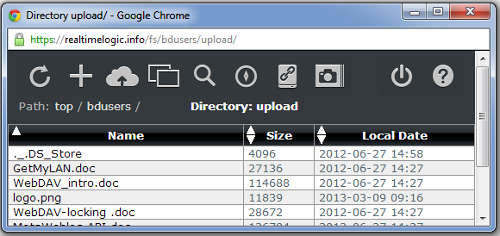

Webdav client linux driver#
davfs2 on Linuxĭavfs2 is a Linux file system driver which allows mounting WebDAV shares just like any other file system.įor this testing, the client is Linux, not Windows 10. WebDrive does not currently support TLS 1.3 or HTTP/2 I suspect these would improve performance. WebDrive (version 2019 build 5305) was used with “Basic Cache Settings” set to “Multi-User.” All other settings were left at their defaults. This test is the same as the previous one except the “h2” protocol is enabled on the Apache server.
Webdav client linux windows 10#
Recent versions of Windows 10 support HTTP/2, so for this test, the “h2” protocol was disabled on the Apache server. It’s accessed from Windows Explorer by using the “Map network drive…” option and selecting “Connect to a web site that you can use to store your documents and pictures” WebDAV Redirector is the name of the built in WebDAV client in Windows. Ping time between them is 18ms average, httping to the WebDAV server URL is 140ms average. The WebDAV server is running Apache 2.4.38 and Linux kernel 5.0.0-rc8. For the smb+davfs2 testing, smb+davfs2 ran in Docker running in Linux and the Windows 10 VM connected to it. Windows 10 (version 1809 build 17763.348) was run as a VM in KVM using user mode networking to connect to the Internet. The client is a Dell Latitude 7490 running Fedora 29. The same client, same server, and same connection was used for each test. I evaluated 7 approaches for clients to access a WebDAV share, testing the performance of each and noting pros and cons. It was literally designed for this use case.

Web Distributed Authoring and Versioning (WebDAV) provides the same basic functionality as NFS, SMB, or FTP over the familiar, widely deployed well supported HTTP protocol. Since SMB isn’t safe to run directly over the Internet (it’s usually not encrypted and it has a long history of security vulnerabilities), potential options included tunneling SMB within a VPN or changing away from the SMB protocol. A recent migration involved users running Windows 10 accessing a Windows file share using the SMB protocol. Part of migrating applications from on-premises hosting to cloud hosting (AWS, Azure, etc) involves re-evaluating how users access their data.


 0 kommentar(er)
0 kommentar(er)
